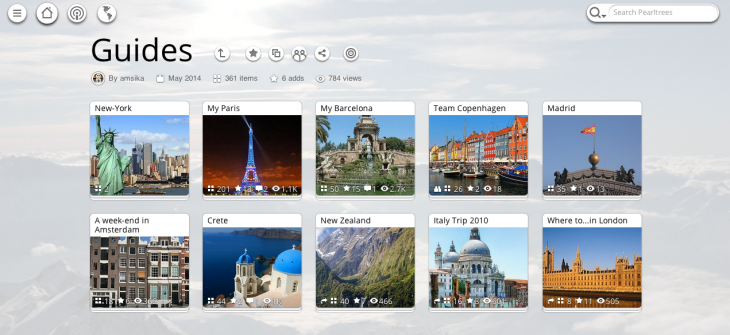
Pearltrees, the service that allows you to arrange Web content, photos and more (‘pearls’) into mindmap-style ‘trees’, has updated its Web and mobile apps today in order to bring a more seamless user experience and new features to the platform.
The company said the Web platform has been fully redesigned and rebuilt in HTML5, making it more easily accessible on a range of different devices, as well as introducing new features also now found in its iOS and Android apps.
It seems it’s becoming a bit of a habit for Pearltrees to significantly revamp its website at about this time each year, and this time around it’s gone all-out to make collections, and collecting, “simpler, more accessible and more shareable,” CEO and co-founder Patrice Lamothe said.
As well as rebuilding it using HTML 5, there are now new features like ‘extended drag-and-drop’ which allow you to quickly add ‘pearls’ from your hard drive, the Web or a document.
The company has also focused on making content discovery within the platform easier. To that end, the ‘Search’, ‘Related’ and ‘My Network’ options will now be displayed using the new dynamic grid format (above), and there’s a new ‘My Interests’ category that will suggest topics you might find interesting.
So, whether you’re a teacher assembling a collection of teaching materials, simply planning your next get-away or sharing your knowledge of obscure 15th century artworks, it should now be easier to find and arrange all that content in one place.
Thanks to the revamp, the company said the platform now provides a unified experience across any device, and that its iOS and Android apps have been updated and are available to download now.
Making it easier to add content to our own collections is a smart move. With a mass of collation apps already out there – and what self-respecting app doesn’t have social sharing options nowadays too – Pearltrees needs to keep up with the times in order to stay relevant.
➤ Pearltrees | Google Play | App Store
Featured Image Credit – Shutterstock
Get the TNW newsletter
Get the most important tech news in your inbox each week.






